Millet Place, Pontoon Dock
Renting next to the DLR
Overview
A joint venture between Linkcity and the Grainger Trust (backed by the London Pension Fund Authority), and the Greater London Authority (GLA) who own the land, Millet Place at Pontoon Dock was developed as part of the new covenant to relieve pressure on the capital’s housing market.
The vision was to raise the standards of private renting, deliver a mix of 236 homes for the Royal Docks, an area currently undergoing significant regeneration, and greatly improve access to the popular Thames Barrier Park for the wider community. The development includes apartments for private rent, affordable rent and shared ownership, office and retail space and dedicated residents’ internal and external amenity space synonymous with the Build to Rent ethos.
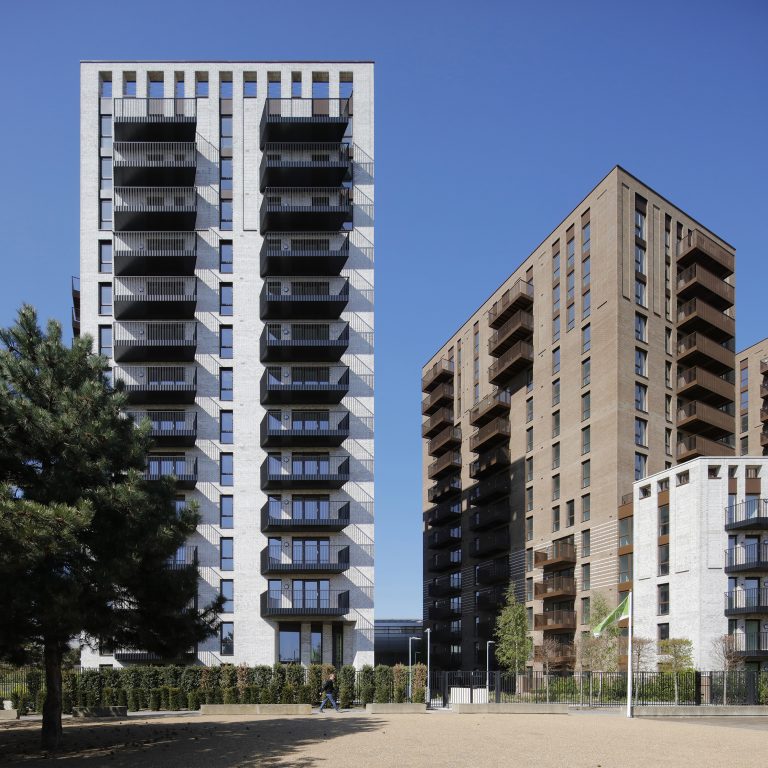
Constrained site
The former visitors’ car park for Thames Barrier Park had been underutilised since the opening of Pontoon Dock DLR Station in 2005 and the GLA, as the landowner, brought the site to market through the London Development Panel in early 2014.
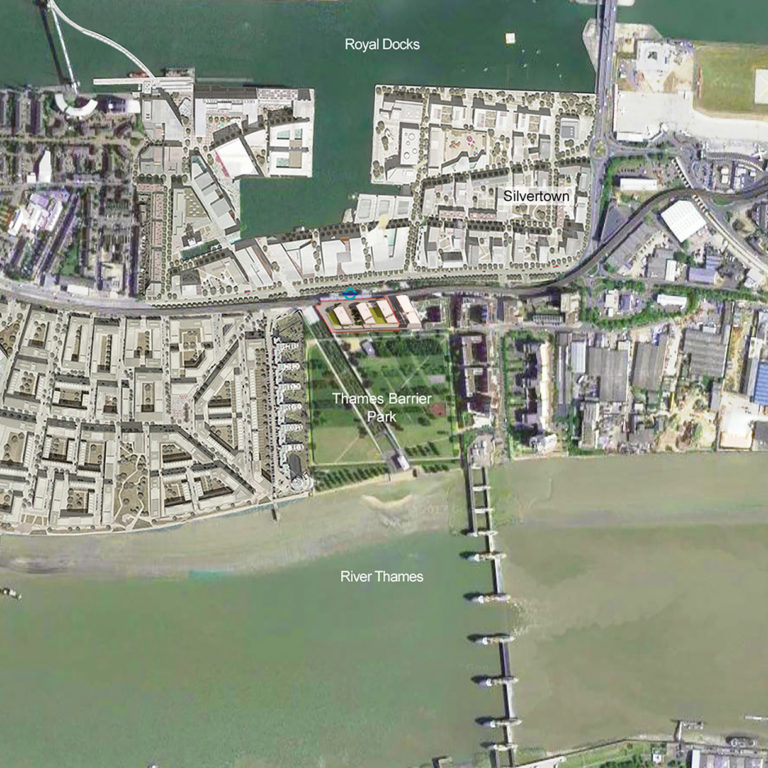
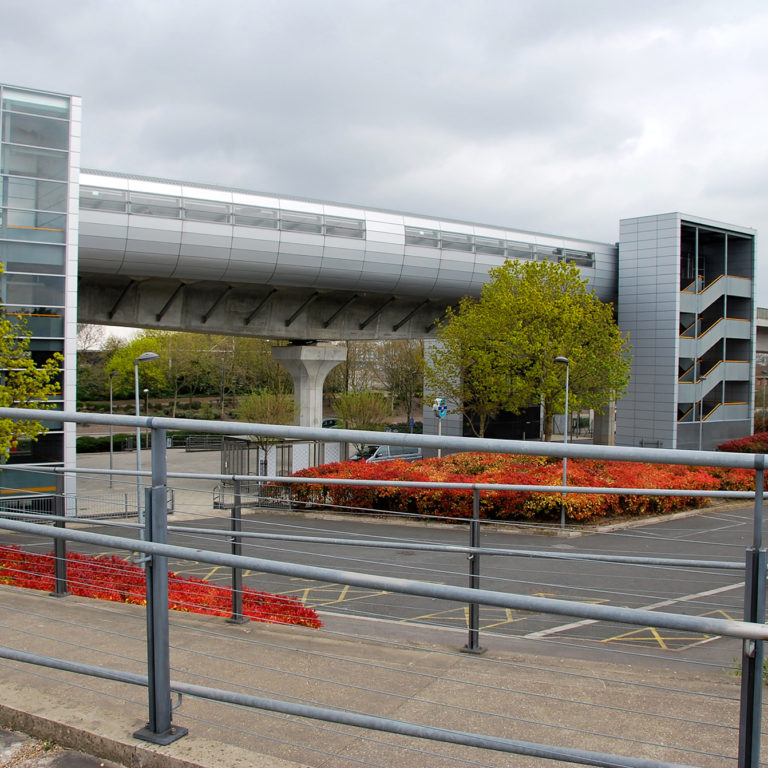
The site lies immediately below and to the south of Pontoon Dock DLR station and adjacent to the Thames Barrier Park. The design responds to and harnesses the constrained nature of the site through its layout, building orientation and landscaping, whilst improving access to the Park.

Opening up the site
The buildings focus around a new publicly-accessible, landscaped route that runs through the centre of the site to directly facilitate access to the park from the DLR station.
Due to the proximity of the DLR’s protection zones, building close to the station was not possible. However, this was used as an opportunity to create a go-to destination for residents and visitors of the park, activated by the 6,000 sq ft of retail and commercial at ground floor. This enhanced public realm was designed to be legible and robust and to take advantage of the increased footfall through the site from future developments, such as Silvertown Quays and Royal Wharf.
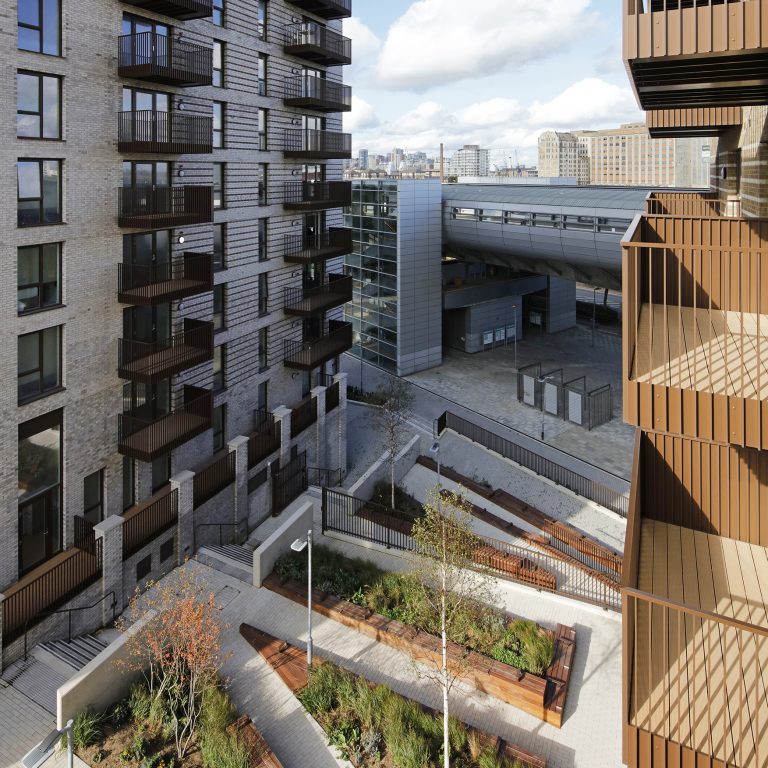
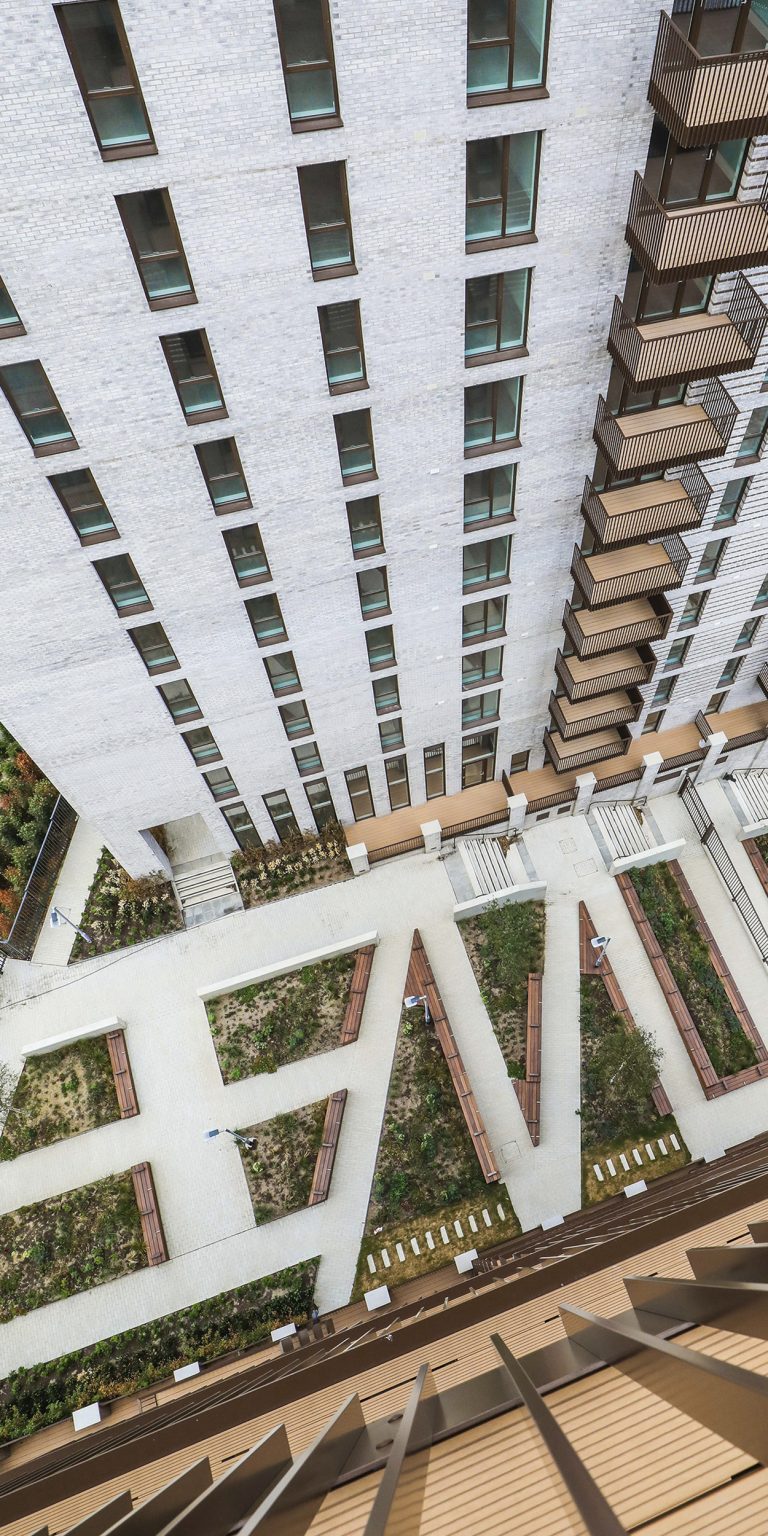
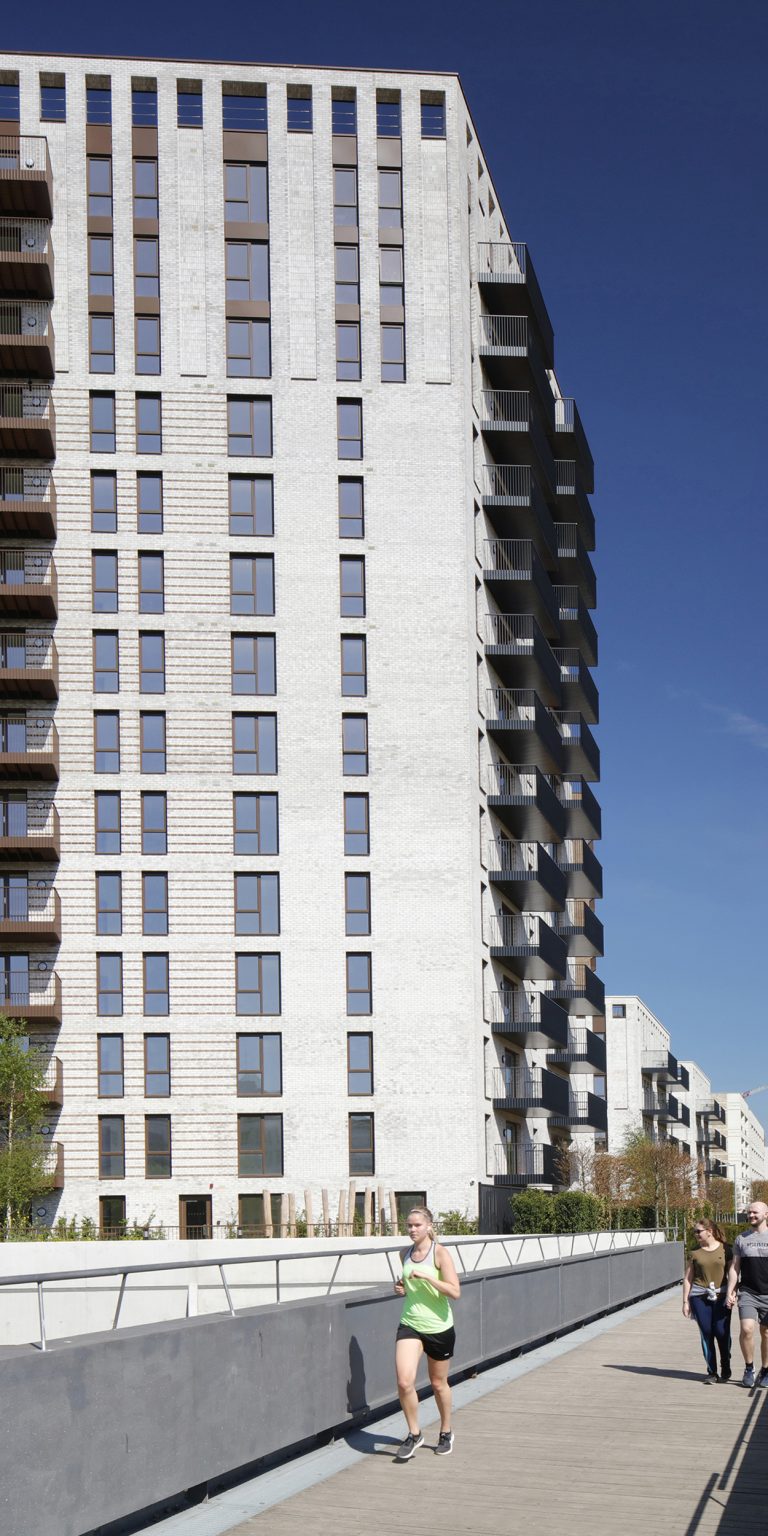
Architecture
The architectural strategy was based on a comprehensive understanding of the local character and was directly informed by the need to improve the visual and physical permeability from the station to the park.
The three buildings were designed as a distinct family; from Thames Barrier Park, they respond to the surrounding built environment by culminating in the white landmark building at the west of the site, creating a full stop at a key entrance to the park. From North Woolwich Road, the focus is on strong masonry elements cutting into the landscape with the ‘perimeter façades’ defining the public realm around the development, including the new park access. Lastly, the ‘pavilions’ form a coherent ensemble with the existing buildings surrounding the park, completing the park’s edge in a legible manner.
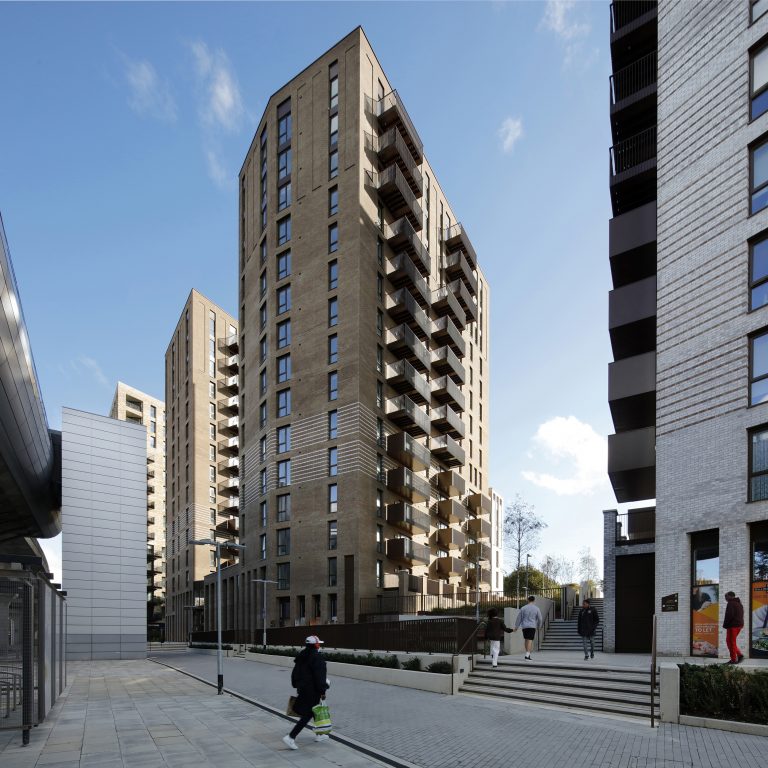
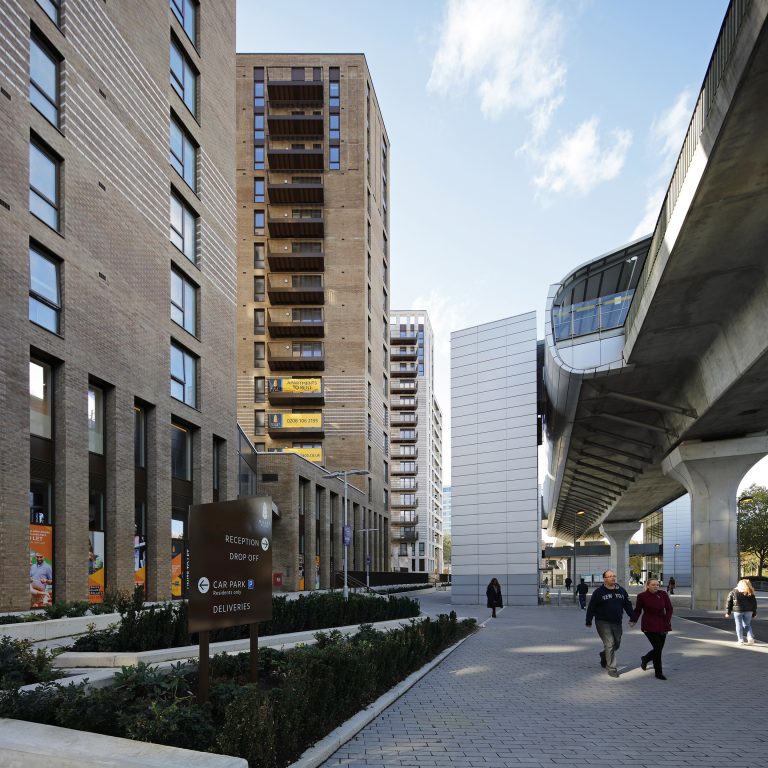
Mixed-tenure homes
As well as private rented accommodation, Millet Place provides a range of affordable housing tenures that respond to local housing needs, for example Newham’s requirement for family housing is addressed by providing 23% three bed apartments across the scheme. The discount market rent and shared ownership homes are accommodated in the ‘landmark’ building, located in a prominent position with excellent long-distance views towards the river, over Thames Barrier Park.
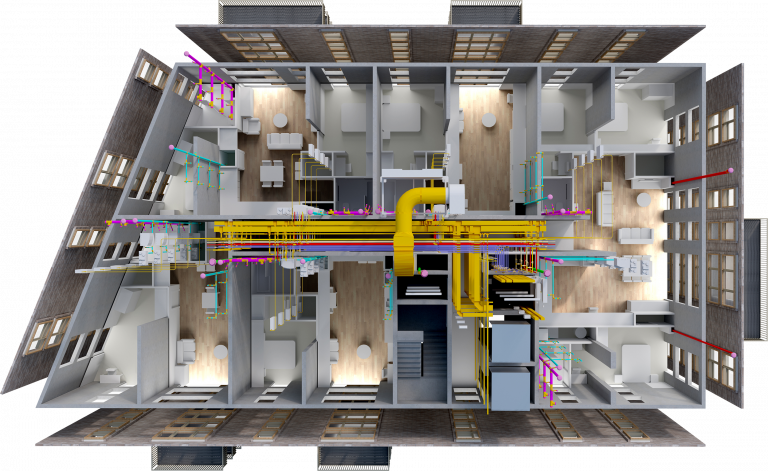
BIM as a design tool
Millet Place was our first project to be delivered using BIM Level 2 from the outset, resulting in an efficient transfer of information and cross-party collaboration, and therefore ensuring an on-time project. Our team maintained a coordinated architectural and structural model with as-built information as construction progressed on site. We believe BIM has huge potential in the design, delivery and operation of buildings, especially in the Build to Rent sector, and we are continually seeking new ways to integrate it into our projects.
“The narrative is not just about delivering great housing; it’s a regeneration story which builds on the values of placemaking by joining up the developments along the North Woolwich Road and opening up the Thames Barrier Park for the local and wider community.” Oliver Campbell / Developer, Linkcity
Photography by Benedict Luxmoore